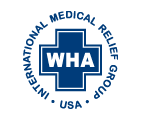|
|
 |
|
Laos Mission Web Blog
Click on below dates to view blog entry. Click on photos to enlarge.
|
|
|
|
|

|
|
|
| November 2-3, 2008 |
 RETURN TO TOP RETURN TO TOP |
|
What a whirlwind of a few days! The first part of the WHA team led by Dr. Thien Do assembled at Washington DC with boxes of supplies and equipment, 26 in total, about 55 pounds each. They started at 2am on the departure day, and haven’t really stopped since then. 2 other groups joined in San Francisco from Los Angeles and Texas. We were extremely happy to be united in San Francisco. Though we encountered some flight delays on the way, we stuck together through our travels to Narita, Bangkok, and finally Vientiane. |
|
|
|
| November 4, 2008 |
 RETURN TO TOP RETURN TO TOP |
|
|
By 9pm on the second day of our travels, the entire Laos mission team had assembled in Vientiane. We had a team of 10 traveled from Vietnam, including medical team leader Dr. Doanh. This is the first time for WHA to have a collaboration of health professionals from both the US and Vietnam for a mission.
We were greeted by Dr. Bounsouei and his staff members for the first collaborative meeting on the mission. We reviewed the itinerary for the following 2 weeks, which includes working in Vientiane, Luang Prabang, and Vang Vien. They wanted to have us work in several different sites per day, but we were able to discuss the important of staying as one team for higher efficiency and speed in treating as many patients as possible. We decided to split up in 3 teams for the first day of the medical mission only, as our Laos hosts informed us that 3 district hospital sites had already been expecting us the following day.
The team stayed up very late that night opening all of the supply boxes and organizing pharmacy supplies for the 3 sites. It was another late night….but through these long hours of work, a strong bond between the team members was quickly forming. |
|
|
|
| November 5, 2008 |
 RETURN TO TOP RETURN TO TOP |
|
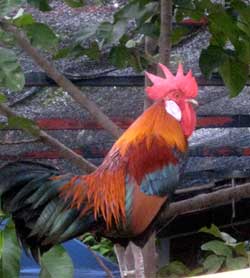
We were woken up early a little too enthusiastically by another guest staying on the hotel premises- a rooster. We visited the Ministry of Health and met with the Vice Minister of Health Professor Vongvichit. Then one part of the group, including Drs. Thien, Doanh, Thang and Ashok visited the Mahosot Hospital for the Ceremony of Equipments hand over. Among the equipment being donated are 2 respiratory ventilators and 3 ICU monitors. Drs. Thien and Ashok will be doing training and teaching of the equipment tomorrow morning. Another group visited the Vientiane Capital Health Department to meet Dr. Saengthong DDS, Deputy Chief Director. Meanwhile, a core of the dental team led by Dr. Thang toured the new dental facilities in Mahosot Hospital. Mahosot Hospital is the largest referral hospital in Laos, and has up to 400 hospital beds. Many of the doctors in the Laos host team work at this hospital. The large hospital was clean and well maintained, but it was evident that there was a substantial lack of necessary medical equipment.
At 10am the entire team split up to go to our 3 respective district hospital sites to provide medical and dental care. The first team led by Dr. Thien went to the Park Ngeum District hospital, which is 70km from Vientiane. We saw a total of 75 medical patients and 42 dental patient in the afternoon. The second team led by Dr. Duc went to Saysettha District Hospital and saw 67 medical and 30 dental patients. The third team led by Dr. Doanh went to Hadsaifong District Hospital and saw 167 patients total. It was a challenge to work in separate smaller teams, especially since we only have 2 pharmacists and 1 nurse on our team. We were able to improvise, work out a good team plan, and execute good patient flow to be able to see everyone. We were all exhausted by the time we reunited back at our hotel around 7pm.
Our reward was an authentic Lao dinner, which was our first complete meal of this mission. We went to bed exhausted, sleep deprived, and jetlagged, but happy about our day’s work and excited for more.
- Dr. Tomoko Kurokawa |
|
| November 5, 2008 - Dental |
 RETURN TO TOP RETURN TO TOP |
|
|
Dentistry here has been a challenge, like everything else. We have been to at least 5 different sites, with the team splitting to cover 2 sites on Wed. the 5th. My team went to a small hospital just outside of Vientiane. It had a dental clinic with one chair, a portable compressor, etc. The two Lao dentists and I spent the day mostly doing extractions. The Lao patients are very happy to have dental care, and seem to be less apprehensive than our American patients! Sterile technique could use some improvement, but we did well considering the situation. The other dental team was at another site that day. Yesterday, the entire medical team visited 2 different sites, expecting more people than we actually saw. The dental team did both extractions, and some restorations using portable equipment. One of the biggest drawbacks is not having any Xrays. Imagine extracting teeth without being able to see what the roots look like, or doing a filling when you can't see if there is decay between the teeth. From the appearance of the Lao mouths, there are many people with bad teeth, decay, and periodontal disease.
- Kyle Coble
The first day morning spent touring the local hospital, meeting the minister of health, the Health Department, and area hospital dental school. Hospital is sparsely supplied however, the Lao people appear to use their resources wisely.
The team was split into three groups, our team site was the furthest from Vientiane, about 70 Kms away. The Dental facility was surprisingly better than we had anticipated, equipped with a modern dental chair and partially air conditioned room. Patients were anesthetized outside and some treated outside as well sitting in a chair braced against a wall. The doctors developed a routine and system which enabled a good flow. The dental team at this site saw about 42 patients, mostly women, and most patients needed extractions. The Lao people were grateful for the care they received. One area that I found surprising was that the Lao people have a high tolerance for pain, there wasn't any cries or appearance of pain. This was our first afternoon...
- Rhonda Coble |
|
| November 6, 2008 |
 RETURN TO TOP RETURN TO TOP |
|
|
A small WHA team led by Dr. Ashok started the morning at the Mahosot Hospital ICU conducting teaching and training of the donated ventilators and monitors to 15 local hospital staff. The local ICU staffs, comprised of doctors and nurses, were extremely excited to see and use the new equipment. Our hope is that this equipment will significantly improve patient care in the unit. Dr. Ashok will give another training session when the team has returned from Luang
Prabang.
The rest of the WHA team led by Dr. Thang Pham, the dental team leader, met with Dr. Sitthideth, Deputy Dean of the University of Health Sciences. The university has a 6 year medical, 6 year dental and 5 year pharmacy program. According to Dr. Sitthideth, the applications and admissions to these programs have been increasing
every year due to its popularity. They would like to have more international health professionals from overseas to conduct teaching curriculums for the students.
The rest of the morning was spent as one team at the Nakhouay Health Center. Upon arrival, we quickly swept the floors, rearranged all of the furniture, set up different stations, and made ourselves at home. We saw many medical and dental patients, and the patient flow was more efficient because we were able to work as one cohesive unit.
Hungry from our busy morning, we were delighted to have a fantastic home cooked lunch prepared by Mrs. Loan and Ms. Thao. They went to a local restaurant nested in a palm studded tropical garden on the road
side, but surprised the restaurant staff because they were not there to order from the menu. Instead, they purchased their food and
ingredients, and took over their kitchen! The delicious hearty meal cooked with the gracious hospitality of our Lao restaurant owner while listening to the American oldies music nourished our bodies and our souls. We were ready for more work.
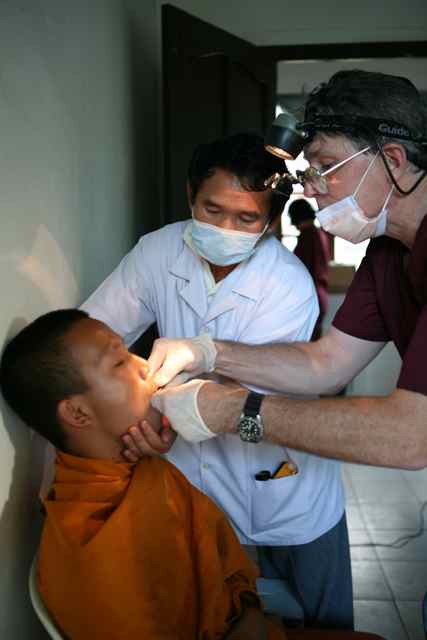 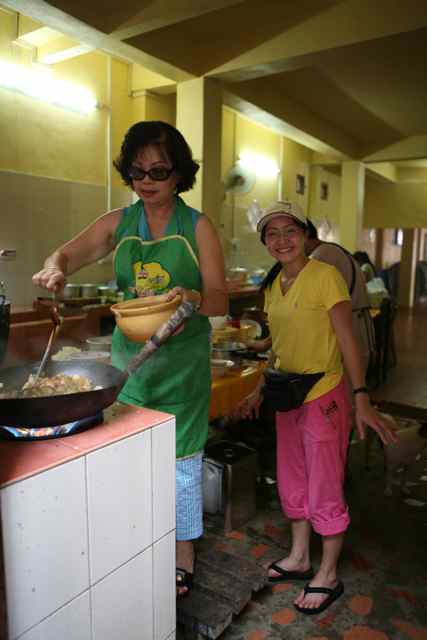 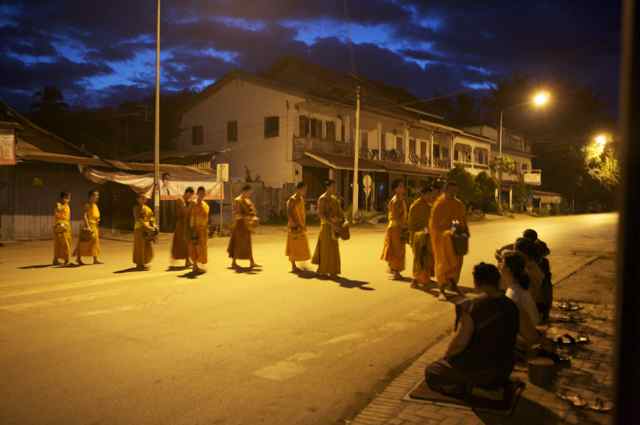
The team spent the afternoon working at the Sithantay Health Center, which is located adjacent to a Buddhist temple. Since the weather was quite hot, our chemistry analyzer failed to perform properly.
The severity of illness was higher in this village and many patients received more extensive evaluation, specialist as well as interdisciplinary medical and dental consultations. The local villagers benefited and appreciated the comprehensive services the combined WHA team had to offer in terms of both medical and dental care. In fact, one of the Buddhist monks from the adjacent temple came to our clinic to have a tooth extraction done by Dr. Kyle Coble. After we finished our clinic, we ended the day with a visit to this temple and were treated to fresh coconut chopped open by the young monks.
|
|
| November 7, 2008 |
 RETURN TO TOP RETURN TO TOP |
|
|
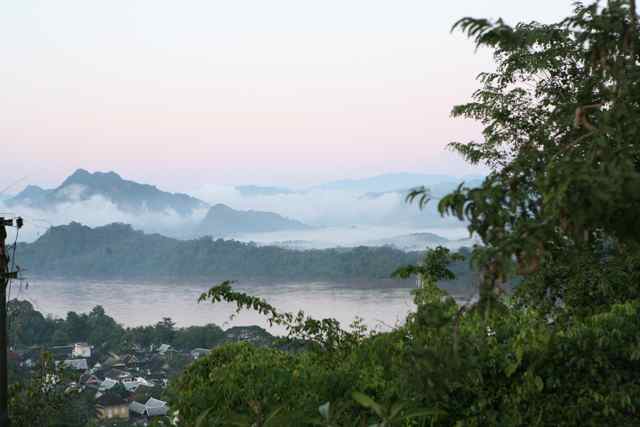
Day 6 was our long travel day. Due to administrative work, we were not able to leave Vientiane until 10:30am. Our first stop along our route to Luang Prabang was a lunch break at Vang Vien where we enjoyed walking along the beautiful river. The landscape scenery here is nothing short of mystical, with meandering rivers straddled by flat rectangular rice fields in multiple shades of green, running up
against tall vertical limestone mountains amidst low hanging clouds that one could almost touch. Little did we know at that time that the remaining bus trip to Luang Prabang would take another 12 hours. We
drove on pot-hole filled winding roads through stunningly beautiful terrain and took in the dramatic landscape of the countryside. We also found out what it is like to use the roadside "natural" latrine
in near pitch darkness in team style. The team's bonding, needless to say, just simply grew. We arrived in Luang Prabang around midnight,
exhausted and sleep deprived. After unloading all of the medical supplies, we had a quick briefing about our following 3 days in this city. We were very excited for the prospect of meeting the different
Laotian minority groups in the mountains.
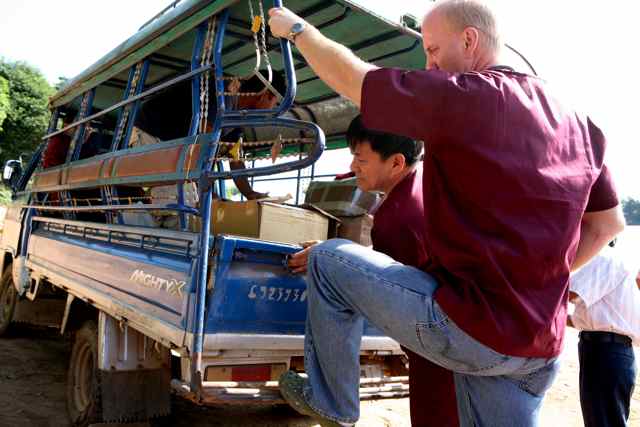 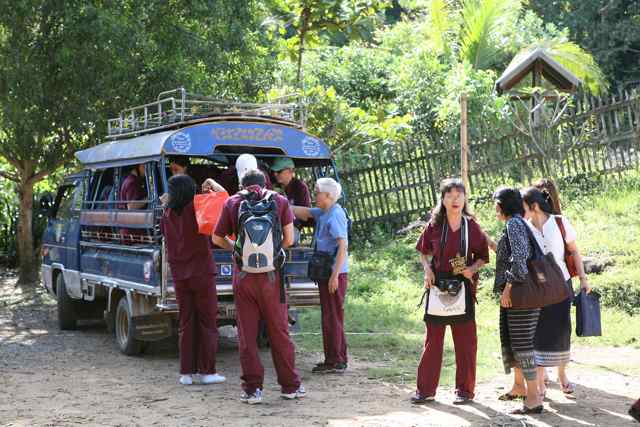

|
|
| November 8, 2008 |
 RETURN TO TOP RETURN TO TOP |
|
|
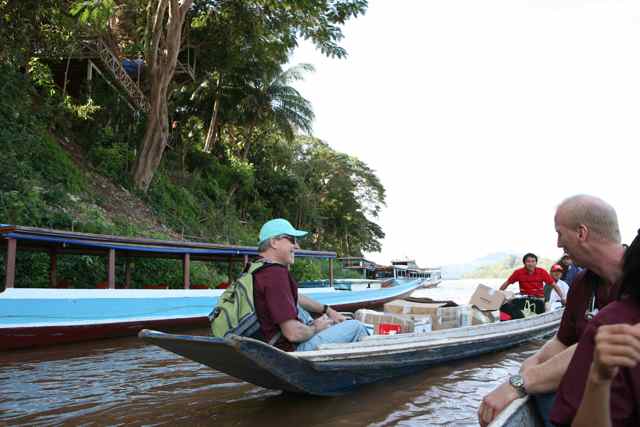 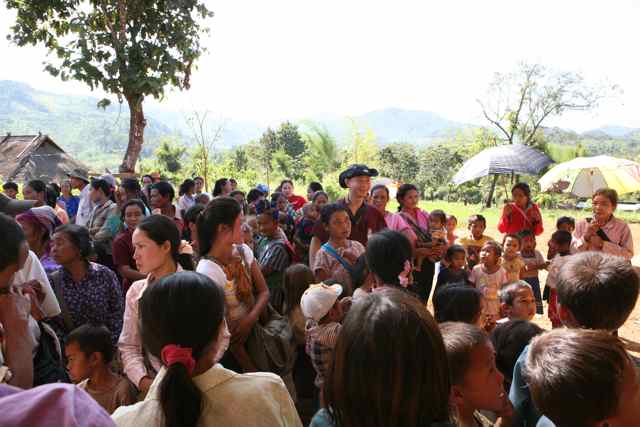
Our morning started off with an exciting boat trip across the Mekong
river to get to our clinic site, the Chomphet District Hospital
Clinic. We had to take 4 motorized canoes to load our WHA staff, the
Laotian staff, and all of our equipment. Once we crossed the river,
we squeezed into several Sawngthaews, which are oversize tut-tuts
(part tricycle fitted with cab and benches in the back). We were
really excited to be working in the field, in such remote and isolated
conditions. We noticed immediately that the temperature was cooler being in higher
altitudes, leading to more favorable working conditions. However, we
were now one staff short in the dental team because of a fall injury in the rain from the previous evening.
After lunch, we moved on to our next location, the Nong Phou Hospital
Clinic. To our amazement, these tut-tuts went four wheel-driving up
and down muddy roads and one low tide river bed to finally get to our
site, which was in an even more remote area deep in the mountains.
The villagers in this and many surrounding villages had heard of our
arrival and trekked many kilometers to see us. This was our busiest
afternoon to date. We saw a large patient load of 80 dental and 200
medical cases. There was chaos in the air due to the high volume of
patients who were very anxious to be seen, as many have never received
medical or dental care in their life. There were two waves of
patients that flowed into our facility. The first wave came with
pre-registered patients who had previously anticipated our arrival.
The second came as news quickly spread to neighboring areas.
At this clinic, there was no electricity or running water. The dental
team had to use bottled water and our own gas generator, brought from
the US, for their equipment. The majority of cases seen by the dental
team have been advanced tooth decay, followed by dental abscesses and
periodontal disease. They have been busy performing tooth extractions,
fillings and root canals. Most patients would get an average of 1-2
teeth extracted, but one patient needed 11. Windows open without
screens framing the faces of the curious who watch on at what is
taking place. The dentists stoop in awkward positions for hours
finishing the day with stiff backs. However tired, they are filled
with a sense of satisfaction knowing they were able to help a few
people who are less fortunate.
In the medical clinic, we saw many patients who we suspected to have
Tuberculosis. We also saw many cases of elevated blood pressure and
blood sugars, but due to the isolated location we were not sure
whether patients would be able to receive good follow up medical care.
This often complicated our decision to initiate pharmacological
treatment. The patient population here was also poorer, so they were
resistant to following our recommendations of getting additional
medical work up. After more than 6 hours of work, the sky had
darkened and there was no light left but our flashlights. The team
had to stop working and turn away a few patients who had come from the
surrounding villages. It was a hard broken feeling but there was no
other choice
since the team had to take a long trip home and re-cross 2 rivers in
near total darkness. By this time, our 9 Laotian team members had
also bonded with us and sang songs with us on the way back.
|
|
| November 9, 2008 |
 RETURN TO TOP RETURN TO TOP |
|
|
The WHA team had another full and busy day of providing health care. We took a very scenic ride to our first site in Luang Prabang, the Ban Sieng Lom Hospital Clinic. We rode through winding deep muddy roads past vast rice fields, lotus ponds and an elephant park. This hospital clinic did not have any electricity or running water in the examination rooms, so the dental team once again used bottled water and our generator to run their equipment.
There were many children peeking through the windows into the barren rooms, curious to see what we were doing. We passed out balloons to these children, and they were laughing and playing with them in the medical ward as we quickly set up our examination tables. Two of the Laotian doctors working with us, Drs. Oudaivonh and Khonsavanh, gathered these children and began singing traditional Laotian songs. They even attempted to sing the English alphabet song, but were only able to go up to the letter F. Although this clinic was in a remote location, some of the patients here had access to outside medical care. Many were already on medications for high blood pressure and diabetes, and some even brought health cards. This made it easier for us to recommend proper follow up care and dispense long term medications. However, the majority still had never seen a doctor before, and they were extremely grateful to receive care from us. The morning went by quickly, as by this day we had adapted a smoother clinic flow and worked extremely well together.
The pharmacy has been the busiest area of the clinic, as we only have 2 pharmacists working on this mission. With each site, our 2 hard working pharmacists have been reorganizing the pharmacy layout to increase efficiency and flow. The medication instruction labels were preprinted in the Lao language and affixed to each dispensing unit. In addition to this our pharmacist Vira, who is Laotian and speaks the language, and Quan, our other pharmacist who used an interpreter, made sure everyone received adequate instructions.
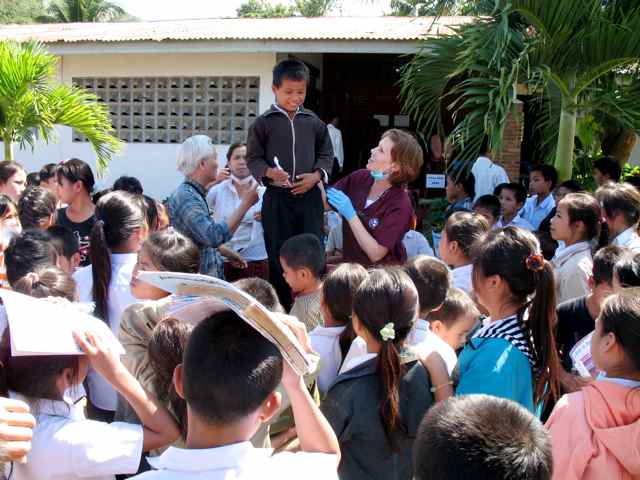 After a brief lunch of noodle soup, we drove to our afternoon site, the Meuang Khay District Hospital. While patients were registering, the dental team passed out toothbrushes to the children, and Dr. Thang did a demonstration on proper teeth brushing. The children listened intently and watched with wide opened eyes as they eagerly held their new brushes. Many of the children cheerfully skipped off to show their families their new brushes.
The medical team evaluated many interesting skin diseases, and even saw a patient with a recent stroke. Our cutest patients of the day were 2 month old twin baby boys with hydroceles; one had it on the left, and the other had it on the right! We noticed that many of the patients we saw at this clinic had received medications from outside sources, but were not taking it correctly. Medications that were to be taken daily were taken on an as-needed basis. It was a challenge to educate them on the proper use of these medications. The clinic was extremely busy, and once again we worked well after it got dark outside. After seeing so many children in this clinic, we were excited to go to the orphanage tomorrow.
|
|
| November 10, 2008 |
 RETURN TO TOP RETURN TO TOP |
|
|
Many of the WHA team members woke up very early around 5am to give alms to the Buddhist monks that walk through the town every morning. We made offerings of sticky rice and bananas. It was a memorable and special occasion to be able to participate in this sacred tradition. The bright saffron orange and yellow garb they wore was a beautiful contrast to the dark blue color of the pre-sunrise lighting. Afterwards, many of us took a nearly 400 step hike up to the Wat Tham Phu Si temple on the top of the mountain. The numerous Buddhist statues were interesting to see, but the most breathtaking moment came as we reached the very top and saw a nearly 360 degree view of Luang Prabang at sunrise. Misty clouds and fog rolled around below us as the color of the sky changed rapidly through the fast traveling mist. No words can really describe the magnificent sight that we witnessed there.
We spent the morning at the government funded and run Ban Nadou orphanage in Luang Prabang. The school and dormitory grounds were very spacious, clean and well kept. The children, some wearing school uniforms, quickly formed single file lines in front of the registration desk. Everybody waited patiently for their turn and followed their teacher’s instructions carefully.
Most of the children were healthy and did not need extensive medical work ups. Many of them seemed to have the same complaints of headache and stomach aches. We dispensed multivitamins and de-worming medications to all, which will hopefully make an important impact on their general health.
The dental team on the other hand, was extremely busy, as many of these children, despite being in good general health, had extensive dental decay. What words can describe the scenes of decayed baby and adult teeth among children 5-18 years old? It is not like the beauty from the Wat, or the lush green hills that encompass most of Laos. But, these 400 children seem happy nonetheless, so it seems on the outside. The medical, dental and pharmacy set up to begin treating the children. The area was one of the best to work in so far. Most of the treatments were extractions with the exception of a few fillings. The children were well behaved, cooperative and happy to have some of their tooth pain eased, not to mention removing infection that has its ramifications. Pens and tooth brushes brought amazement and big smiles on the children's faces. We also taught patient education the best we could given the language barrier, using body language and one of the children to demonstrate proper brushing technique. We can only hope that we made some kind of impression and that what little we did today will help to prevent or reduce the amount of decayed teeth in the future.
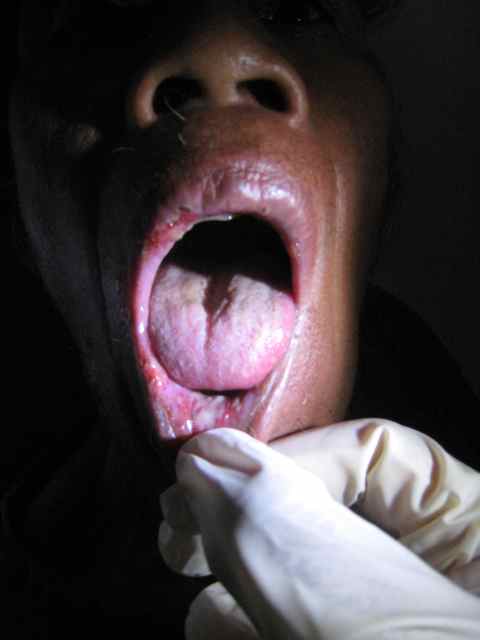 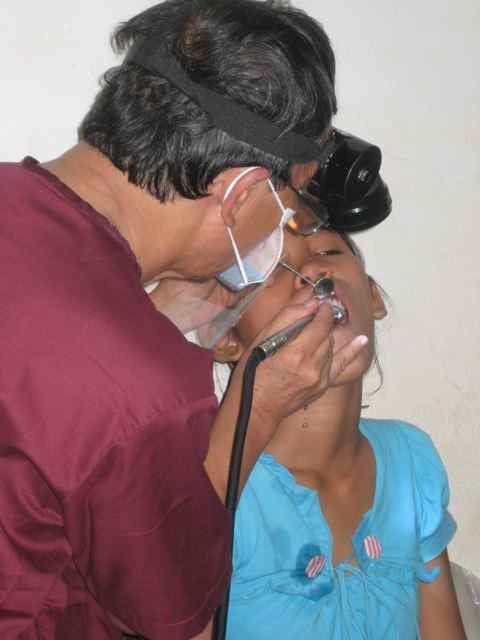
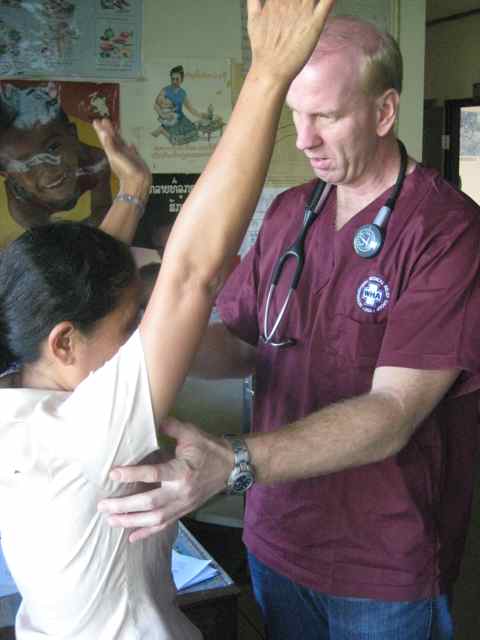 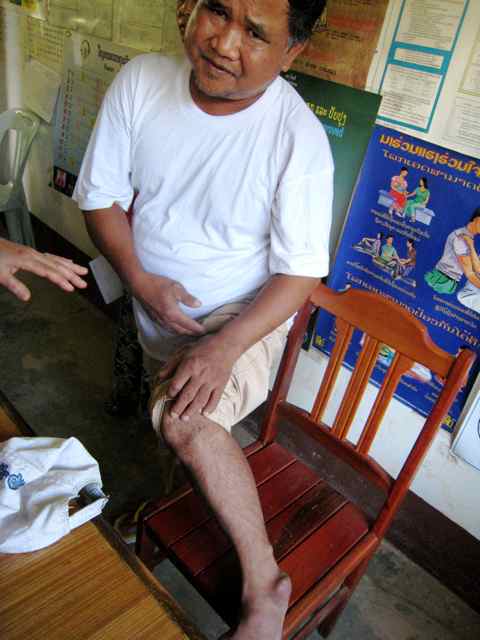
By the time we were wrapping up our morning clinic, it was lunchtime for the students. All meals were organized and distributed by the orphan children, with no adult supervision. We were informed that this orphanage runs on government funding, and meal costs are about 500 kips per child per day (approximately 6 cents). These children are provided lunch and dinner, but not breakfast due to insufficient funding and high volume. As lunch was being handed out in groups of 10 to 20 children, we could see the intense look on each of their faces waiting for his or her share of the rations. This distribution of meals among 460 hungry children was chaotic but took just under 10 minutes to complete.
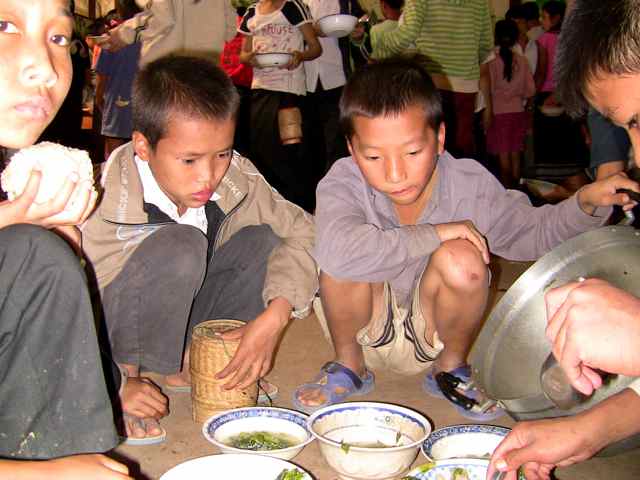
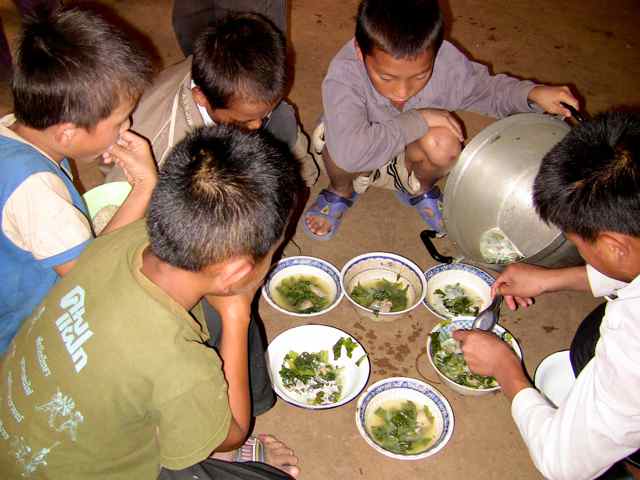
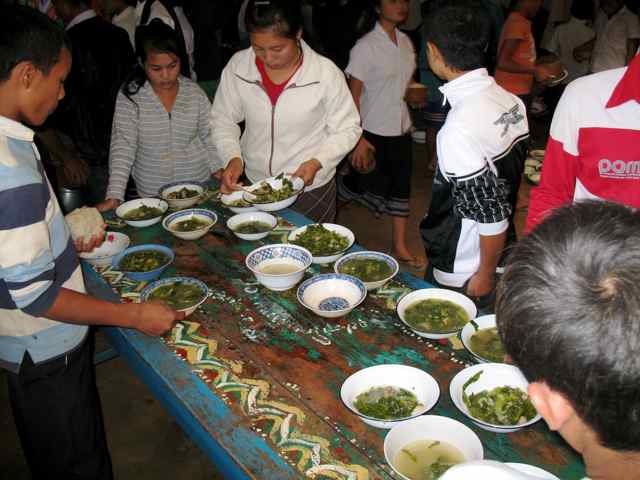
We passed out toothbrushes, crayons, pens, and coloring books to all of the school children. It was heartwarming to see the bright smiles and genuine excitement in these children.
We visited the boys and girls dormitories, and they varied from rooms with bunk beds to larger communal sleeping quarters with mattresses laid side by side on the floor.
After getting a warm wave goodbye from the school children, we were off to spend our first free afternoon sightseeing. We took about a 30 minute bus ride to the Tat Kuang Si Waterfalls. We were extremely excited to have this break to do fun activities. The air by the tall majestic waterfall was refreshing and cool.
Our team works well together in spite of fatigue, thirst or hunger; we have all bonded like a family suspended in time, for the moment. Each of us has our own personal objective though we all share the same goal to help even if in a small way. We will leave here different people, knowing that behind the scenes of a beautiful country there is more than just flowers and lush green hillsides, this is a great need for many of the people of Laos.
|
|
| November 11, 2008 |
 RETURN TO TOP RETURN TO TOP |
|
|
This was our other long travel day for the mission. We took an 8 hour bus ride back to Vang Viene through acutely winding long roads that had no guard rails. The long bus ride took its toll on the already exhausted WHA team members. A couple of team members felt car sick and the rest felt rattled up from the bumpy car ride. While the bus was turning around a sharp curve, our experienced driver slowed the bus to a crawl and maneuvered carefully around a large gaping hole in the road that could have easily swallowed a small car or motorcycle. Apparently, the recent rain had washed part of the road into the deep ravine below. As we carefully drove by, we could see through the wide gaping hole and down the steep vertical cliff below. Perhaps the reason we missed this black hole into the deep abyss was because good deeds don’t go unnoticed.
There were so many inspirational moments on this mission and this prompted Rhonda, our team dental hygienist, to write this poem.
Bus to Luang Prabang
I wonder how it feels to be
The woman who sits alone
On her porch,
No chair or bench – just
Concrete under her bones.
We pass her by, on this
Winding road to Luang Prabang.
Water buffalo and lily,
Pink water lilies, stretching
Their stems high above the
Murky pond, their beauty
Contrasting concrete and
The solemn woman.
Mekong and thatched roofs,
Rice paddy and rooster,
Bend together;
Rhythmic and coalesced.
Obelisk-like mountains project into
The sky, with a sense of confidence.
But below, stride small feet and
Bare skinned little brown bodies.
R.M. Coble, Nov. 2008
Team Spirit
This W.H.A. mission must be the health field's equivalent of "outward bound"! You recruit a group of health care professionals and support people for a mission to Laos. Give them basic information, but not too many details. Let them figure it out as they go along! Most will meet for the first time at the airport. That is the beginning of a long distance, life changing adventure. It will challenge their knowledge, their skills, their adaptability, their ability to interact with others, to work under pressure in unusual and even primitive conditions.
They will find excitement, challenge, friendship, stress, fatigue, good food, bad food, changing schedules, long rides, laughter, and maybe a boat ride across the mighty Mekong River (at night!). Every day is different. Like the steps leading up to the Buddhist temple on the hilltop above Luang Prabang, you will not know what is at the end of this path until you follow it. Then you may find the view from there to be extraordinary!
K. Coble, D.D.S. |
|
| November 12, 2008 |
 RETURN TO TOP RETURN TO TOP |
|
|
Today was our last full working day on the mission, and we were all very
motivated to make the most of it. By this time the team had developed a
very good rhythm and flow, so the day went by very quickly and smoothly.
Our morning site was at the Phatang Health Center. The facilities were
extremely clean and well maintained. Each room was clearly labeled and
organized. There were several outpatient examination rooms, a delivery
room, a pharmacy, an inpatient ward, and a kitchen. We used the delivery
room to do genital and pelvic examinations on patients. It was nice to have
an individual private room to do this, as we did not have this type of set
up at our previous locations. In fact, at some of the remote locations that
we worked at, we had to temporarily stop the clinic flow to have all of the
patients leave the communal examination room, have the patient lay flat on
uneven wooden tables, have somebody hold an open umbrella for 'privacy', and
perform the examination by flashlight.
This last clinic day we only had 4 doctors in the team, so we were initially
worried about how that would affect our clinic flow. However, we were able
to manage quite well and finished on time, given that the ratio of Laotian
interpreters to doctors was now almost 1:1. Previously 2 doctors shared an interpreter, which slowed the
clinic down. We had Laotian doctors work as interpreters for the medical
team, and Laotian dentists working with the dental team. Not only were they
helpful with language interpretation, but also by seeing patients together
we were able to exchange information and ideas about our different
experiences.
We saw many patients with high blood pressure here, and dispensed quite a
few blood pressure medications. Due to the smoother clinic flow, we were
able to spend more time doing patient education regarding the disease, diet,
and proper medication management. We also saw many infants at this clinic,
and most were being breastfed and appeared healthy.
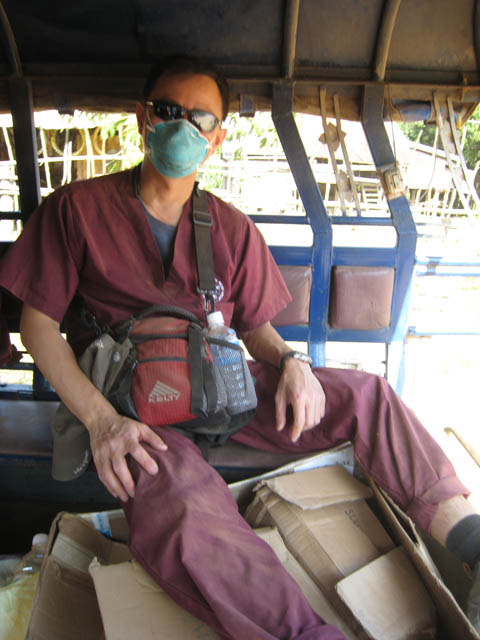
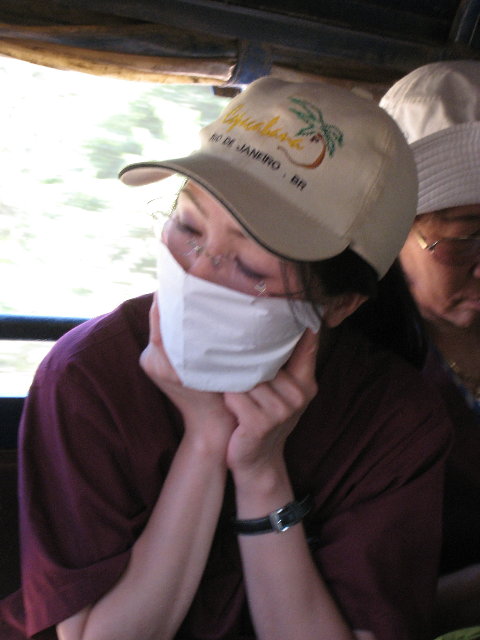
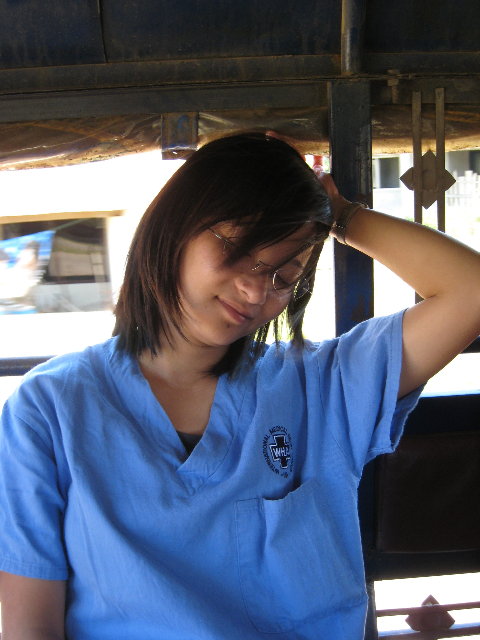
After eating lunch in the bus, we loaded all of our supplies and staff into
several tuk-tuks to go to our afternoon clinic site, the Namouang Health
Center. It was a 20 minute bumpy car ride to this site, and due to the dust
kicked up by the trucks, many of us riding in the back had to either wear
masks or cover our mouths with tissue. By the time we arrived at the site,
we were all completely covered from head to toe in a thick coat of dark
sienna red dust. This health center, like the morning site, was also very
clean, spacious and well maintained. This was a relatively healthy
population, and we did not see any serious pathology. However, the
continued frustration was felt trying to manage patients with diabetes and
high blood pressure. Even though many of these patients with poorly
controlled diabetes and high blood pressure could clearly benefit from
starting medications, we were reluctant to do so because they did not have
any means to check their blood sugars or blood pressure regularly. In the
US, many patients have their own machines at home, but here in Laos they
were only available at these health centers.
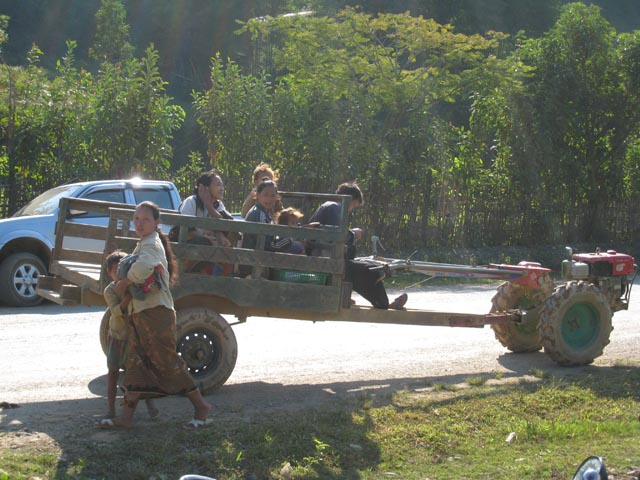
We finished this afternoon clinic on time, and took a quick walk around the
village to see the dramatic lush landscapes of Vang Vieng one last time
before we loaded back up on the tuk-tuks to our bus. That evening we
arrived back to the capital city Vientiane around 11pm. We had a team
meeting, and each of the WHA team members took a moment to share their
thoughts about the mission. It was a touching moment as Vila, who is
originally from Laos, became emotional when she talked about how significant
this mission was for her on both a professional and personal level. We all
gave several toasts to our successful mission as we bonded one last time and
gave each other big hugs.
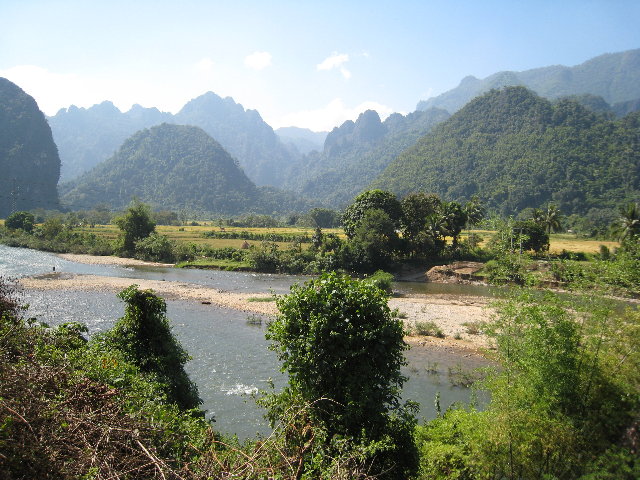
|
|
| November 13, 2008 |
 RETURN TO TOP RETURN TO TOP |
|
|
Most of the dental team left early in the morning to catch a flight back to
Vietnam. A few members of the medical team, led by Dr. Ashok, visited the
ICU at the Mahosot Hospital to do a follow up visit on the donated
ventilators and monitors. Dr. Ashok was very pleased to see that the ICU
staff had good working knowledge of how to use the equipment from his
previous teaching session. The rest of the team, led by Dr. Thien Do,
visited the Deputy Dean of the Medical School to discuss the prospect of
having us return to Laos to be involved with teaching and training of
medical students and residents. The enthusiasm was shared on both sides,
and we hope that this will be a possibility for our future missions. We
also donated the remaining medications and supplies from our mission to the
Mahosot Hospital, which was welcomed and greatly appreciated.
We also met with the Director of the Curative Department in the Ministry of
Health. He stressed the importance of patient education and preventive
health as a priority for the direction of health care in Laos, and expressed
hope that we would return again to be a part of that process.
A few of our Laotian hosts accompanied us to the airport to bid us farewell.
During our mission, we created a very deep bond with them, and it was
difficult to say goodbye. They have been such gracious and kind hosts, and
their hard work and generosity made our mission enjoyable. We hope we can
return to Laos and work with them again soon.
We boarded the plane as we took one last bittersweet look at Laos. What a
beautiful country filled with gorgeous landscapes and kind people! We came
here to provide health care and give our expertise, but we ended up
receiving more generosity and humility than we could ever imagine.
Tomoko Kurokawa, M.D. & Tuan Nguyen
Dental Impressions
There are many volunteer opportunities around the world for dentists.
Dental treatment is one of the most needed health services worldwide. I
volunteered to go to Laos with W.H.A. because my friend, Dr. Thang B. Pham
was going, and because of my desire to return to Southeast Asia.
Dr. Thang and I first met when he and his wife were refugees in Khao I
Dang, in 1980. At that time, Khao I Dang, on the Thai side of the Cambodian
border had about 150,000 Khmer refugees and around 1,000 Vietnamese
refugees, in separate areas of the camp. It was an experience I will never
forget.
I will not forget this trip either! It has been very special that Dr.
Thang and I should return to this part of the world together, to work side
by side as dentists, providing treatment to poor Laotians. The conditions
were better than the refugee camps, but there were many similarities.
In Laos, we traveled to 12 different health centers in 7 days! Travel,
in itself, was a challenge! We rode buses, pick-up trucks with benches in
the rear, and even boats across the Mekong River! Sometimes there was air
conditioning, sometimes just hot air and dust, and always bumpy, winding
roads.
So to go on such a trip you need to be a bit of an adventurer! And the
working conditions vary tremendously. Only two locations had even basic
dental clinics. The rest had none. The ones with dental clinics were near
Vientiane, and they were modestly equipped (one dental chair in each). OSHA
would be shocked! At other locations, we sat up our dental equipment in
whatever room was available, and the other medical teams set up their
stations.
Imagine this scenario: after traveling at least an hour or more, on
bumpy, dusty roads--maybe inside a bus or in the back of an open truck--we
would pull up to a rural health center to see a crowd of people waiting.
More people would come after word got out that we had arrived. We would
rapidly unload all of our boxes of supplies and equipment, and set up, and
go to work. It sounds easier than it was!
Loading and unloading numerous heavy boxes was part of the routine. It
would be carried to each station, like registration, nursing, examinations,
dental, pharmacy. And don't forget to find out where the toilet is! Going
to the toilet is sometime a challenge given the small dark confine space and
the small hole in the ground that you should not miss.
After visiting a few of the health centers, a routine developed. The
working conditions were difficult for everyone, but no one complained. We
helped each other, and worked together. If we were lucky, we had ceiling
fans. More often, we just had open windows, with sunlight streaming in and
dust particles glistening in the light. The windows permitted the local
people to watch, as we worked.
The dental patients were referred from the screening desk. The most
frequently needed treatment was extraction. We did have 2 portable dental
units brought in by the Ho Chi Minh Dental school team members, and a
limited and selective number of fillings and root canals were done. Most of
the Laotians we saw had never been to a dentist.
We were fortunate to have Lao and Vietnamese dentists with us. We had
Lao interpreters, but it was sometimes a funny mix of languages and
gestures. There were phrases in Lao, English, Vietnamese, and French.
Somehow, a diagnosis was made, and treatment was done!
Once the patient was brought in, he/she was motioned to a chair--yes,
just a typical chair--which was pushed up against a wall. We usually set up
several chairs along a wall, with a plastic trash bag between. The trash
bag was the receptacle for everything from teeth and gauze to "spit" from
the patients. When no rinsing water was available (most of the time, not),
we used the liquid hand sanitizer.
After seating the Lao patient, the offending tooth was confirmed visually
and by the person pointing to it, or asking the translator to clarify the
problem. For anesthetic we used 2% lidocaine, 1/100,000, with or without
topical. The Lao people are very stoic, and usually sat through the
injection and extraction process without showing much reaction. There were
several children, though, with the typical crying response.
Once numb (mum ba), the dentist, gloved, masked, and with headlight, usually
had to lean or squat to remove the tooth. The patient would lean his/her
head back against the wall for support. It was primitive, but it worked.
Visibility was not easy, not was the body position. We usually had sore
backs by the end of the day! The selection of forceps and elevators was
good, however, it would have helped to have some root elevators. We had
numerous teeth break during extraction, and many were already decayed to the
level of the gums or below. Of course, we had NO XRAYS! Two assistants
kept our instruments organized, and sterilized (steam autoclave). We had to
use a generator once when there was no electricity. This was not a sterile
environment by OSHA standards, but we did the best we could under the
circumstances.
Most of the patients had more than one bad tooth, but with people
waiting, only the painful tooth was extracted, unless one or more were in
the same quadrant, or there were easy roots to remove. There were many
teeth decayed to the gum line, many abscesses, and large cavities. It was
sad to see a lot of severe decay in young children. People here do not
brush their teeth regularly or maybe not at all. Many have no running water
and no access to dental care.
At least when a painful tooth is extracted, you can feel like you have
helped that person, as the pain will eventually be gone, you have improved
their life in a small way. The big picture is more complicated, for the
dental and the medical team. What can we do that will have a lasting impact
to improve the health of these Laotians?
Kyle Coble, D.D.S.
|
|
|
|
|
|
